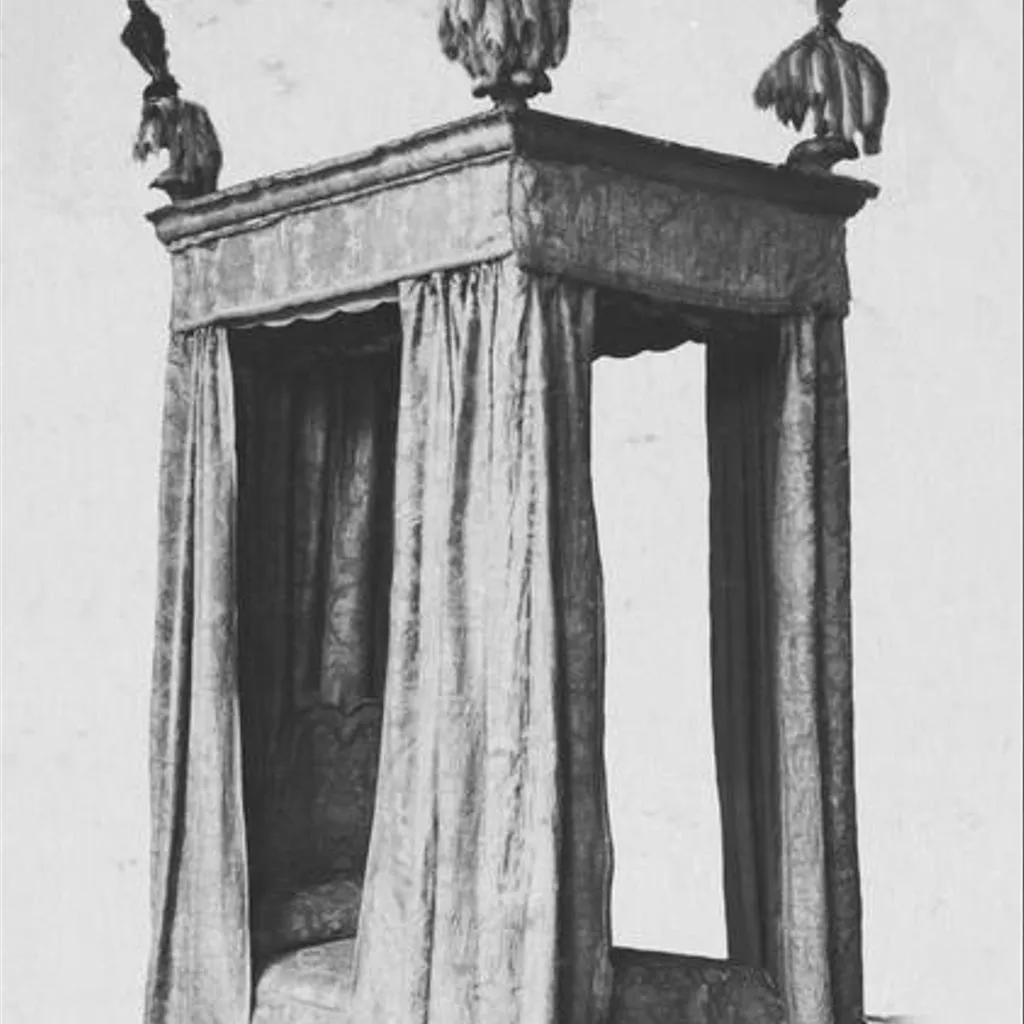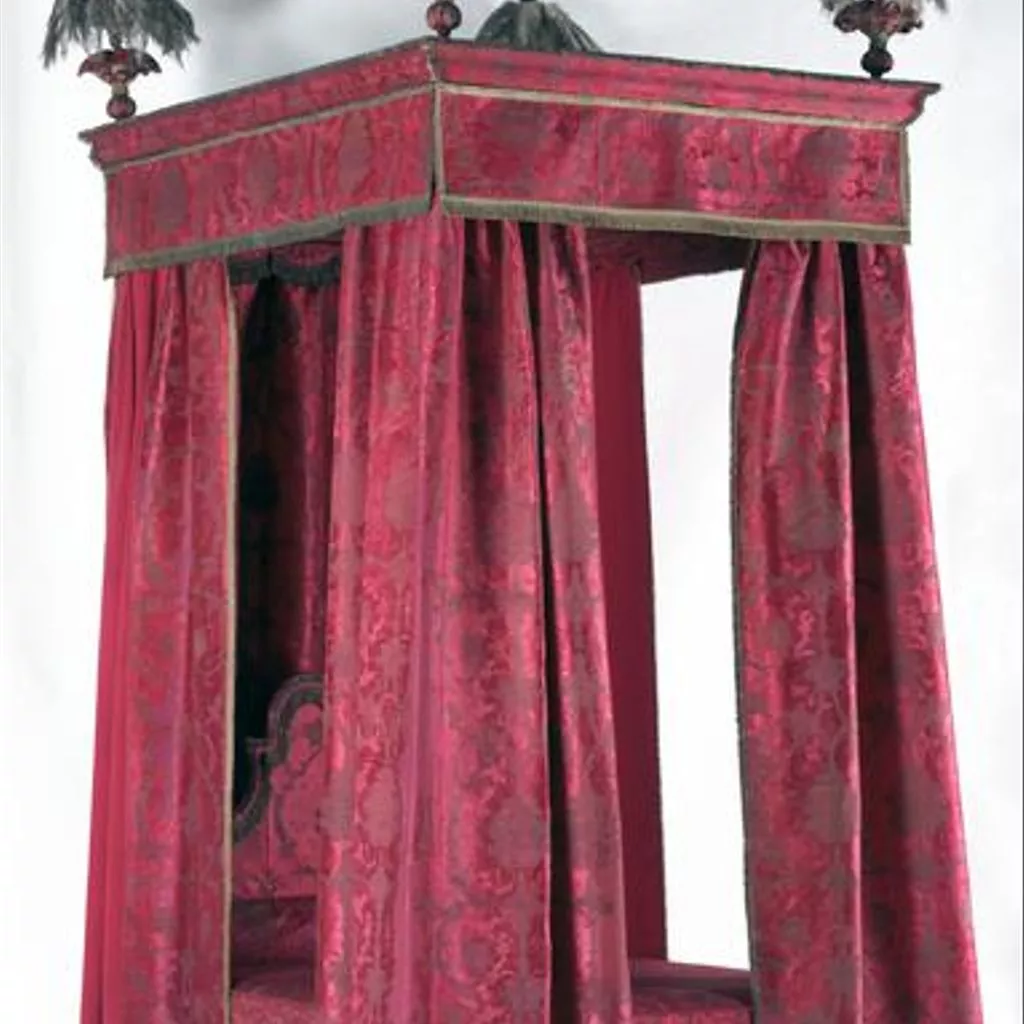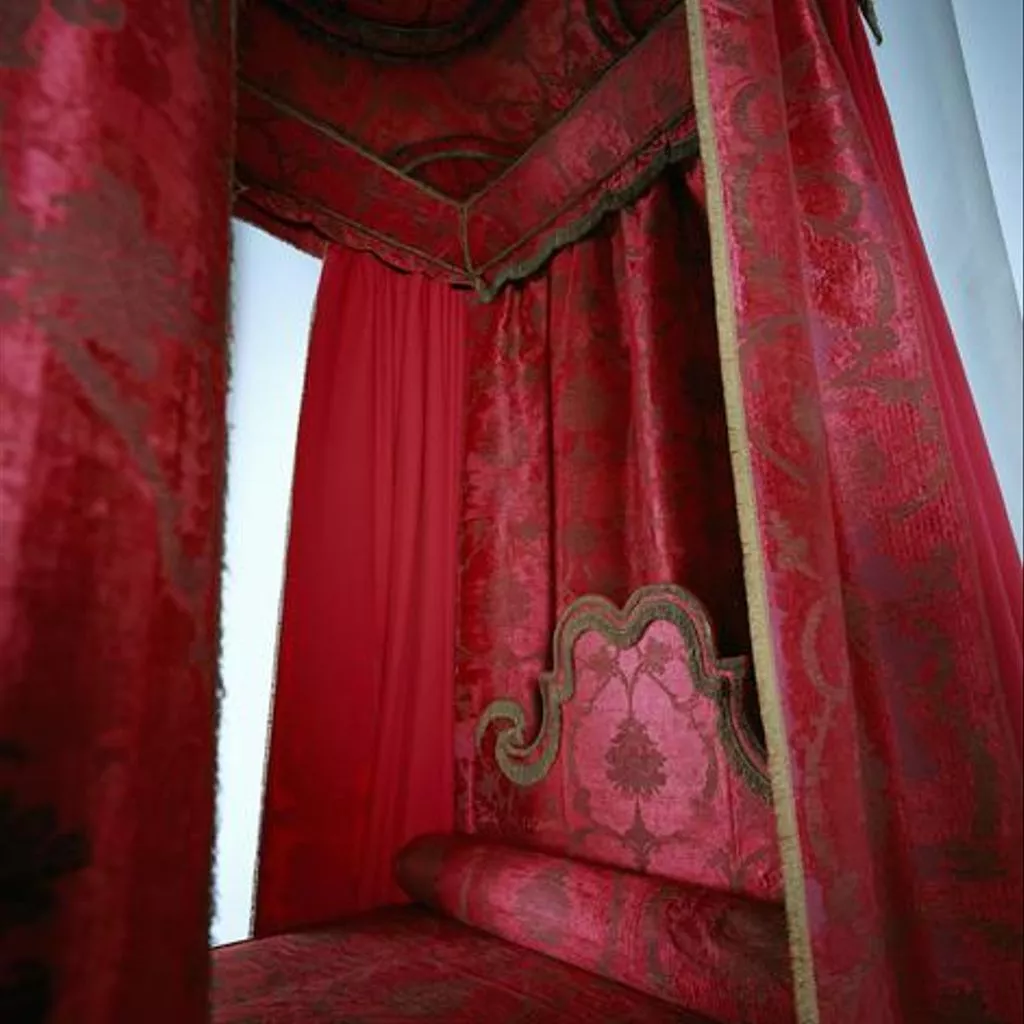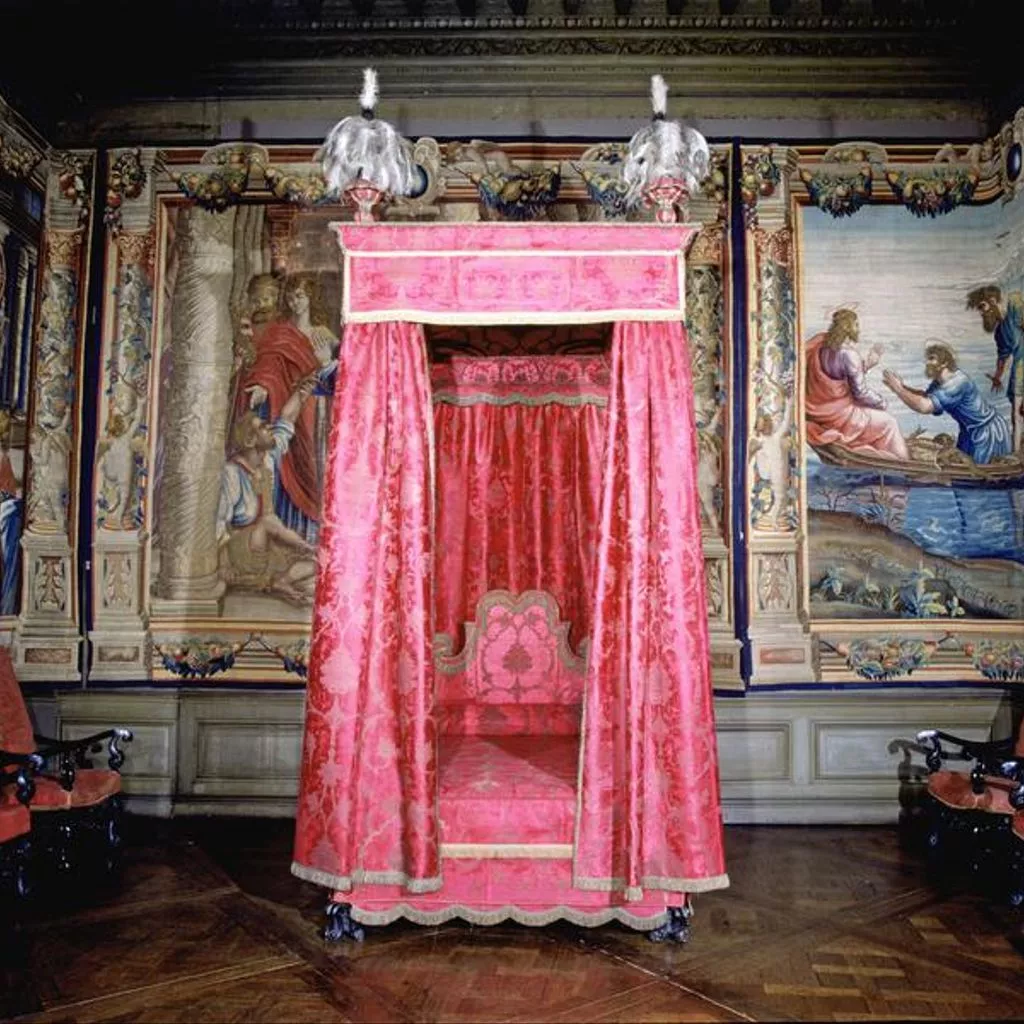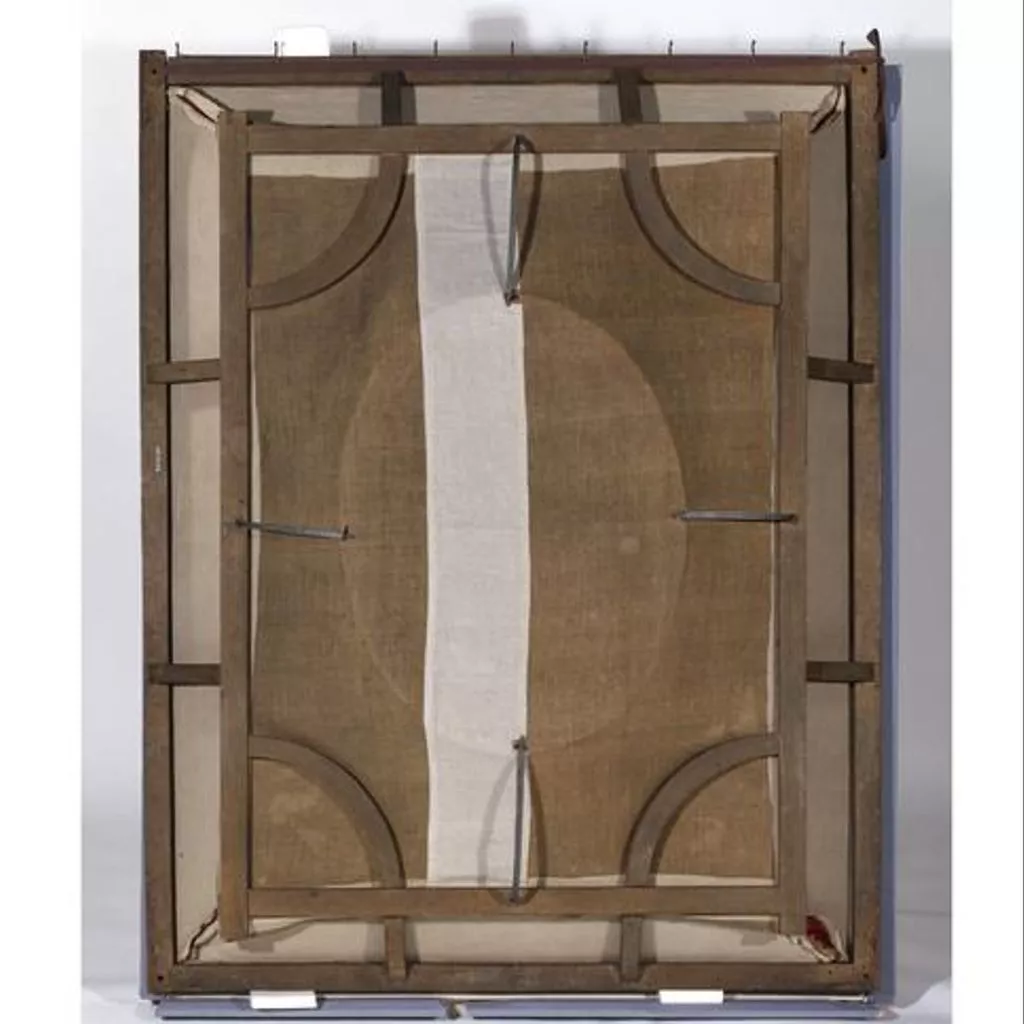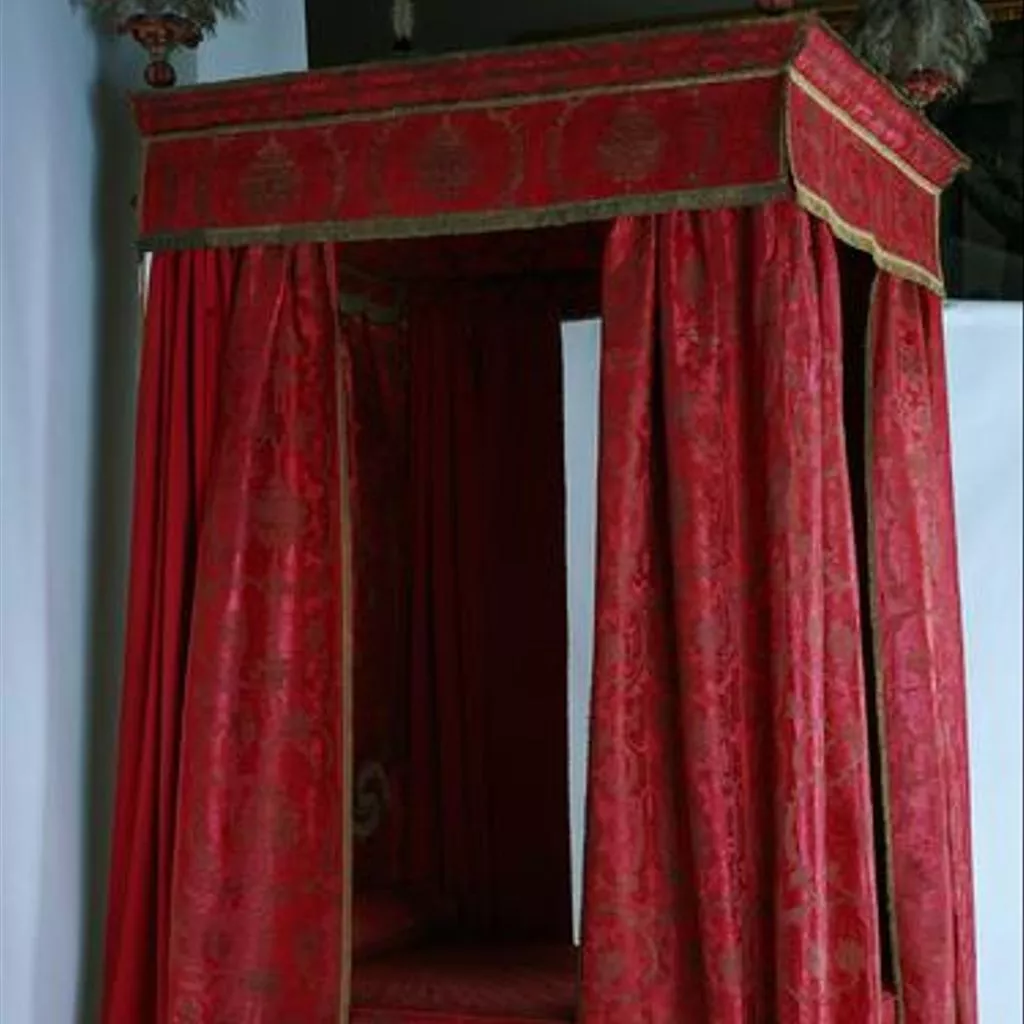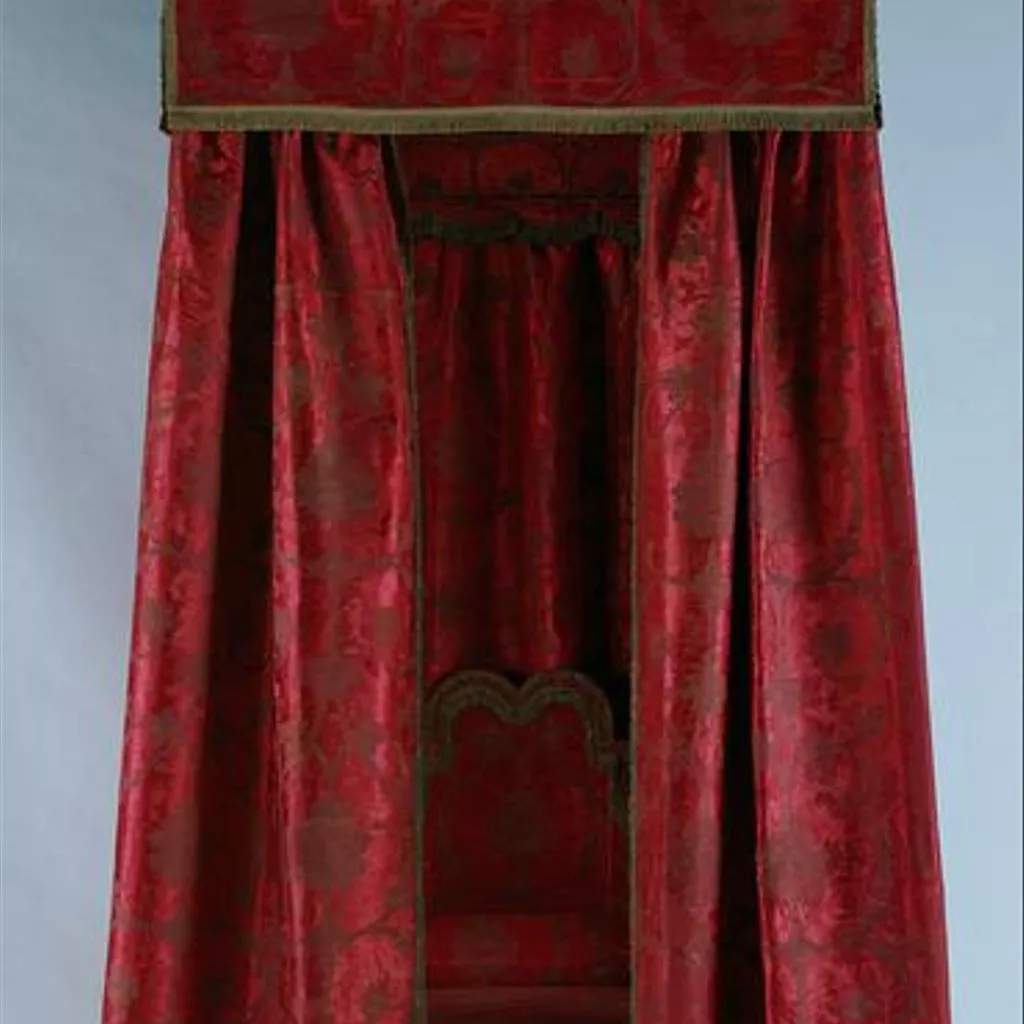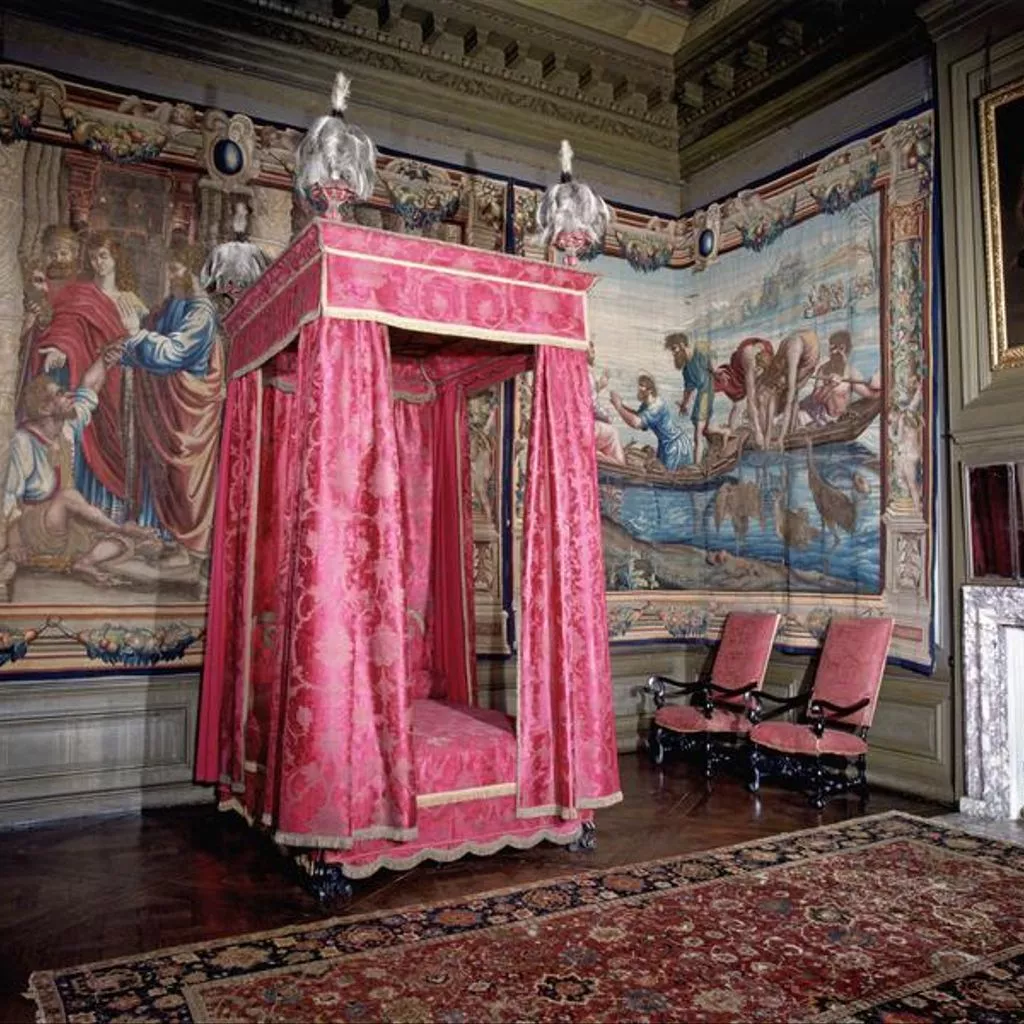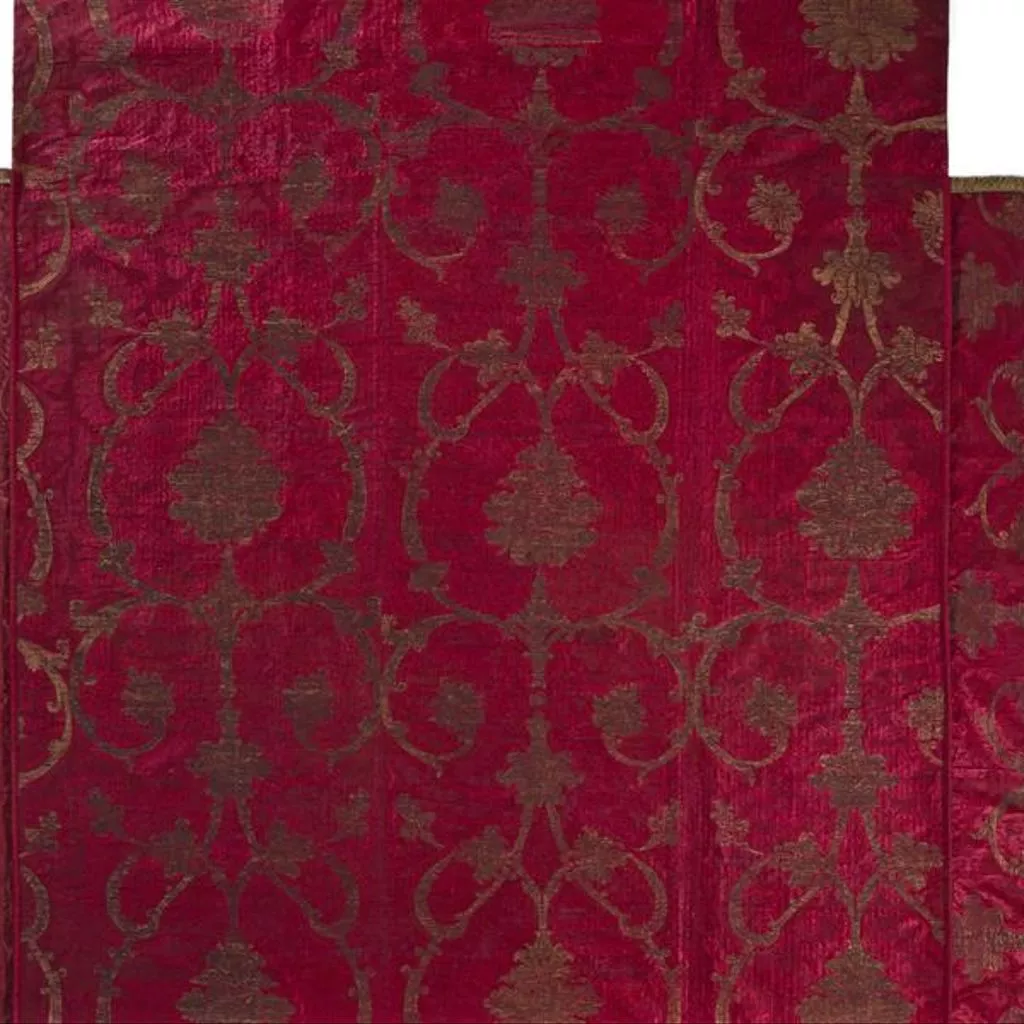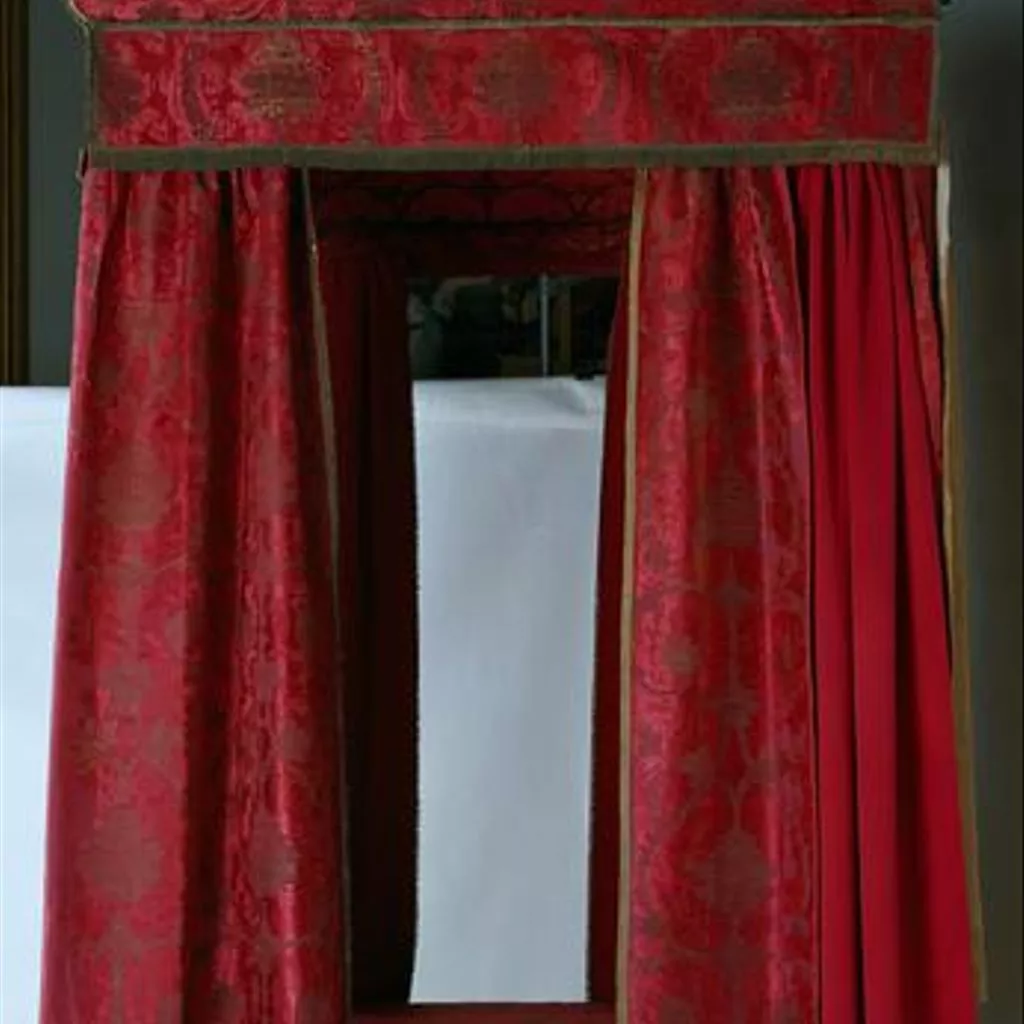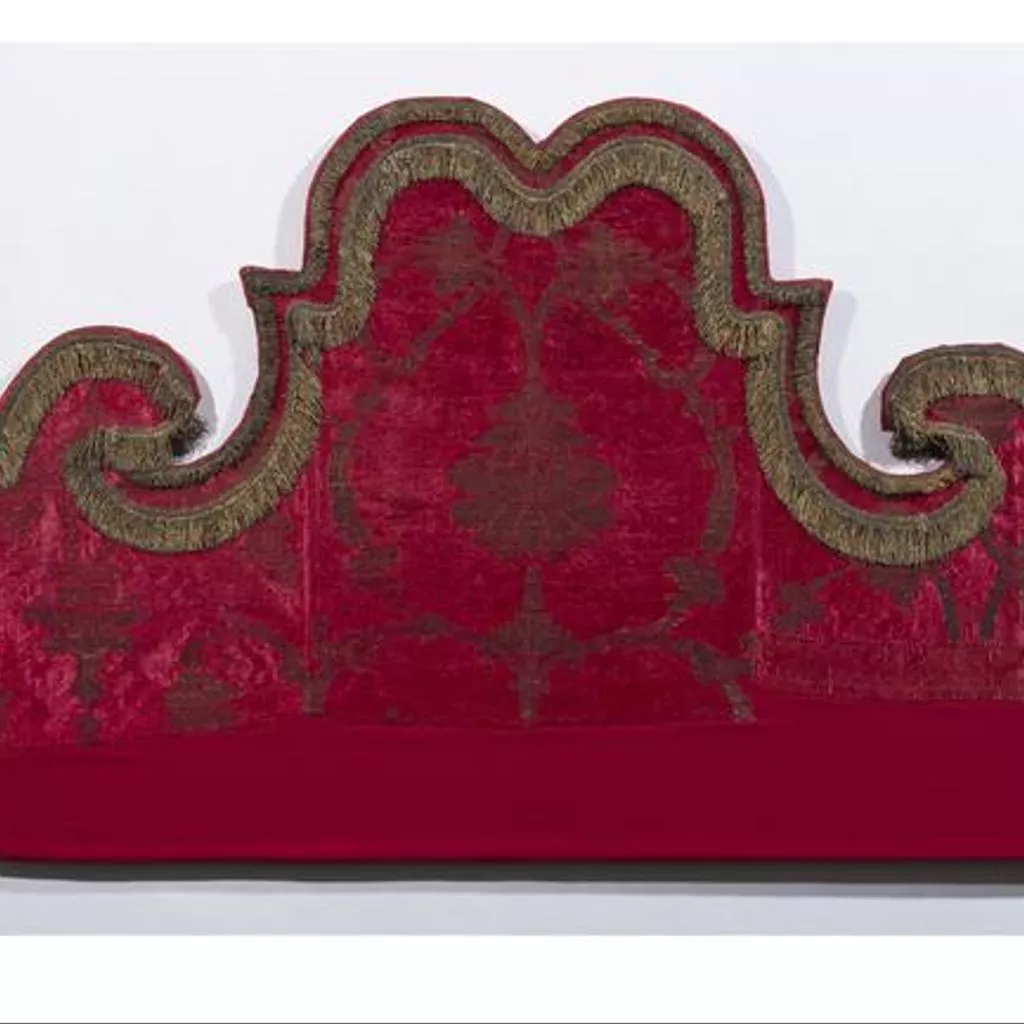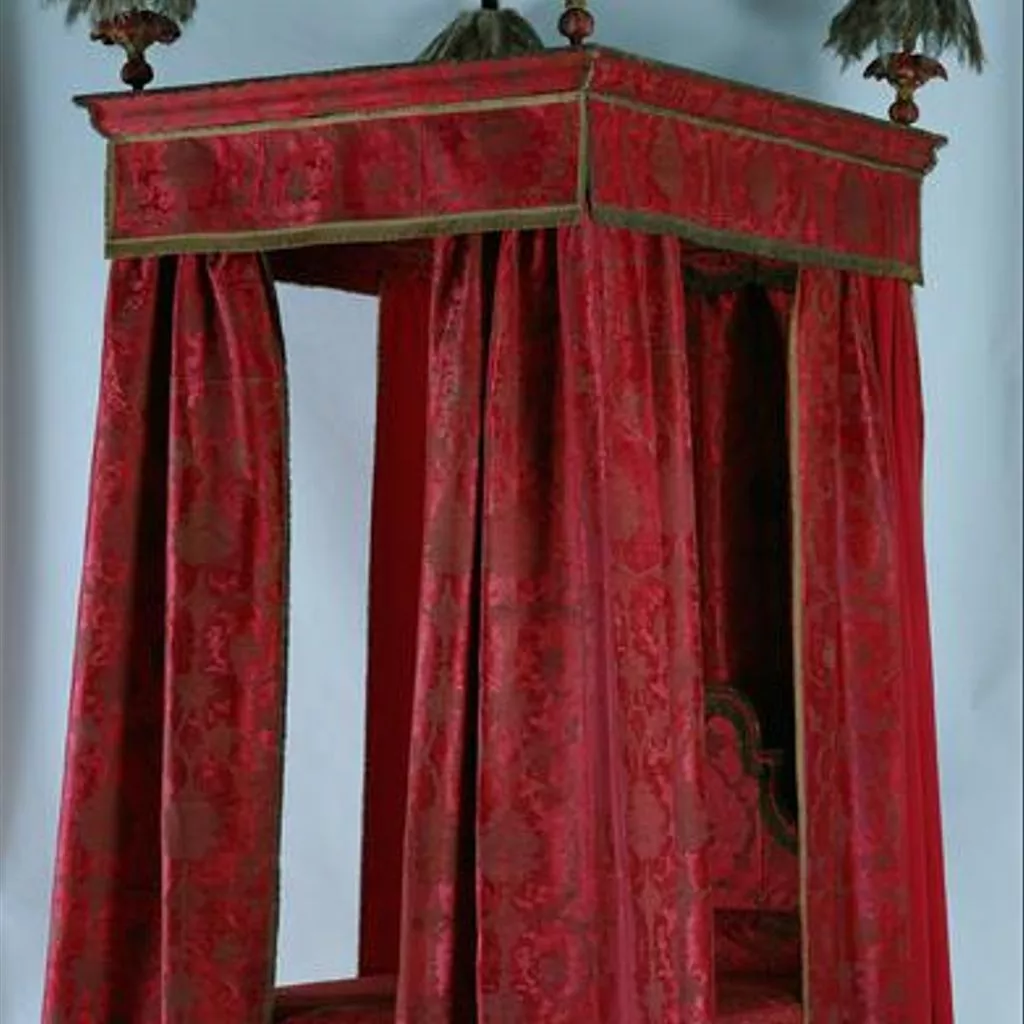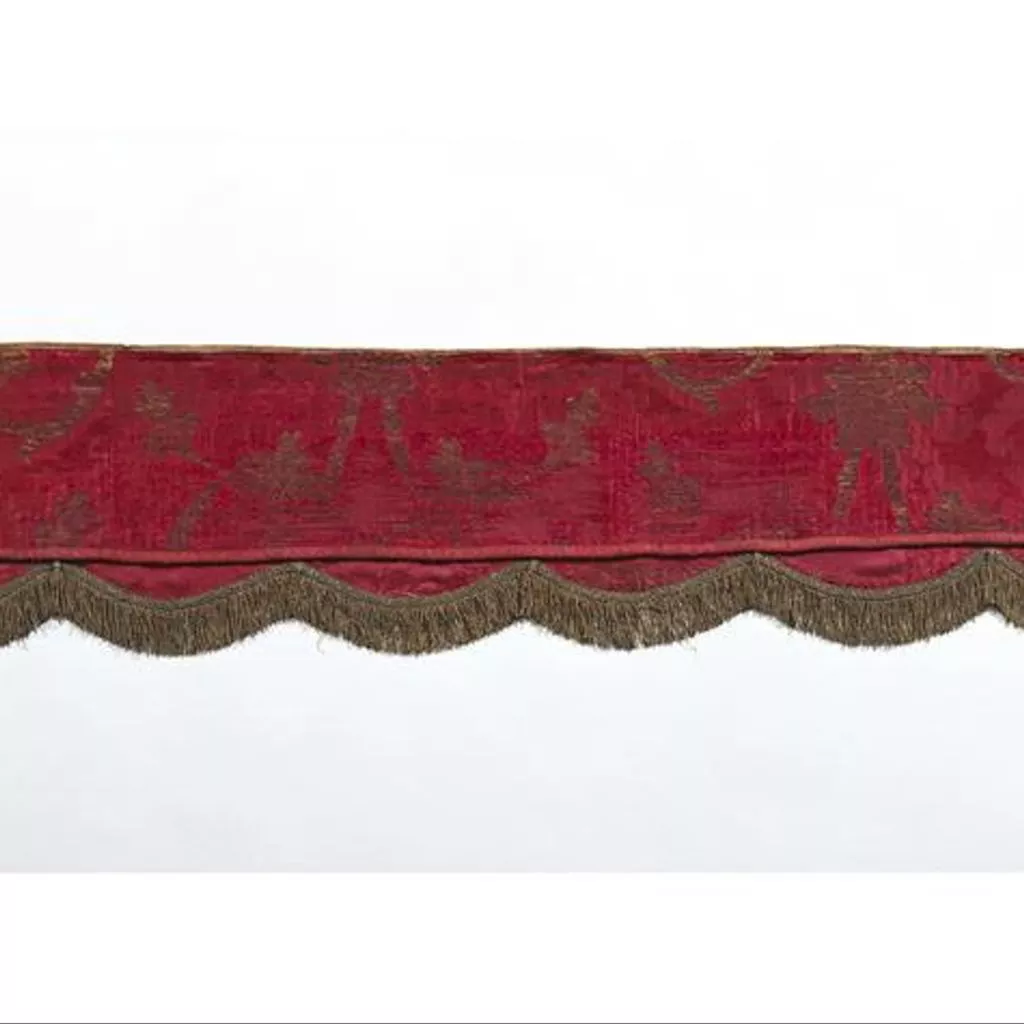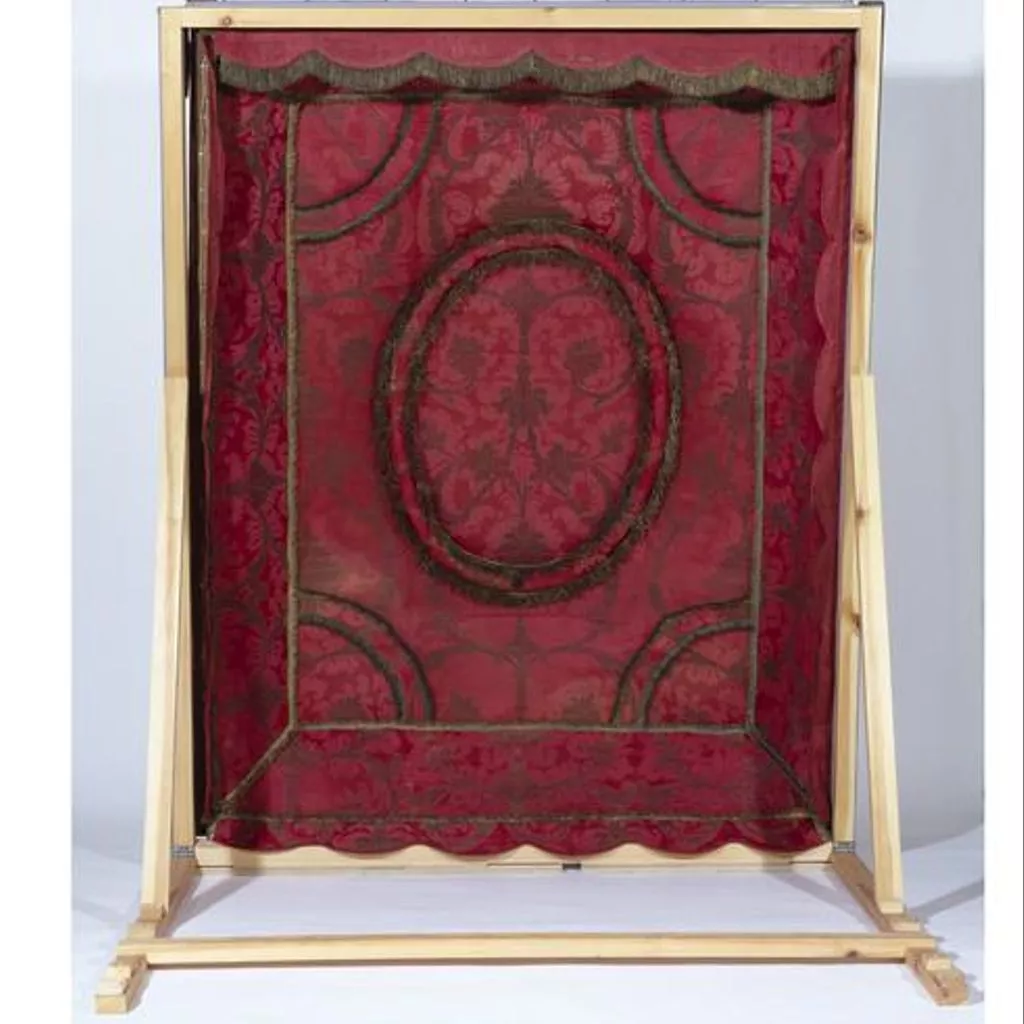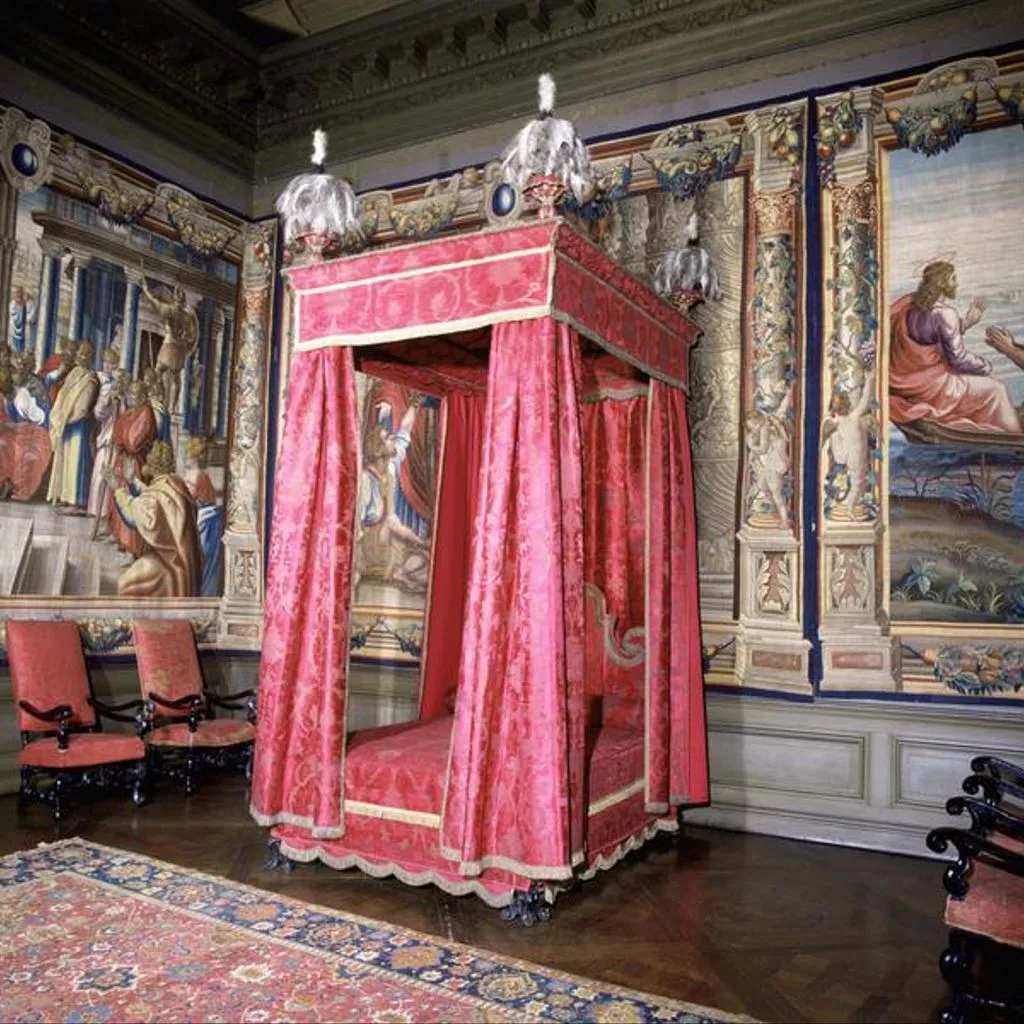Description
The bed is similar in style to fashionable beds of the 1670s, which had a basic rectangular wooden frame completely enclosed by curatins. These were know in England as 'French beds' because the style originated there. During the 1670s Ralph Montagu was Charles II's ambassador to the French Court and Master of the King's Wardrobe and it is tempting to suggest that he acquired the bed when he was in France in the 1670s. Alternatively he might have acquired it from the King as a royal perquisite, as a result of his royal appointment. It might possibly be one of six beds ordered by Charles II from Louis XIV's upholstere, Jean Peyrard, in 1672 and 1673. As a comparison, another of these is thought to be the 'King's Bed' now at Knole, Kent, acquired by the Sixth Earl of Dorset as a perquisite in 1694. The Knole bed has very similar ostrich feather plumes arising from urns, a shaped headboard and carved feet.
On the other hand some elements of the Boughton bed suggest a later date. Certain baroque features, such as the shaped tester, the scalloped edges to the valances, and the elaborately carved feet, are more typical of the 1690s. Perhaps the bed was made in the 1690s and acquired by Ralph Montagu then, possibly as a perquisite when he was Master of the Wardrobe to William III.
Another theory is that Lord Montagu bought the bed in the 1670s, but altered it in the 1690s, increasing the height of the bed by adding feet, raising the headboard and adding a shaped cornice. There is physical evidence of early alterations to the bed. There are early spacers above the feet, and above the tester to raise the height of the cornice. Nails were knocked into the headposts to raise the headboard. The cornice itself might have had a curved section added, as the frame is oak, but the shaped part is pine. The rest of the bedstock is all oak. The lower valances were lengthened at an early date by the addition of scalloped edges.
Historical evidence could be consistent with this theory. The State Apartments at Boughton House were completed between 1695 and 1697. Possible the bed was altered for the new state bedroom. However, It is not possible to be certain. The visible alterations could instead have been made when the bed was sent to London in 1705 to be repaired by the French upholsterer Francis Lapiere.
The silk fabric cannot be dated precisely owing to absence of dated comparisons. It dates from the period 1670-1700, though on balance it is more likely to dated from the end of that period; The brocaded pattern is 'shadowed by the larger pattern in the silk damask beneath, a technique typical of the 1690s. The silk on the chairs which accompanied the bed is not of the same pattern.
Boughton Bed, English or French, 1670-1690, red silk brocade on an oak frame.
Tall tester bed with an oak frame, rectangular in form, with hangings, linings and covers of Italian crimson silk damask brocaded with gold thread, trimmed with gold braid. The tester is enclosed by flat upper valances, below a curved cornice. At the four corners of the cornice are plumes of grey and white ostrich feathers rising from silk-covered wooden urns. The four feet are carved in openwork with angular scrolls, painted black.
The curtains, upper and lower valances and counterpane are trimmed with gold fringing. The flat headboard, with a scrolling top, is lined with matching silk damask and fringing. Behind the headboard is hung a headcloth of matching silk damask. The interior of the tester is domed, the joins trimmed with braid, with four short scalloped inner valances attached to each long side. The outer valances, hung from the lower edge of the cornice, are plain and rectangular, trimmed along the straight lower edge with fringing. The lower valances, attached to the bed rails, are in two parts, a plain rectangular panel, below which hangs a scalloped edging strip attached separately.
The curtains have been made into four sections in the 20th century, hanging at each corner and reaching half way down the lower valances.
This bed typifies the expensive and sumptuous state beds installed in country houses in the late 17th century. Ralph Montagu, the first Duke of Montagu, acquired it for Boughton House, Northamptonshire, which he inherited in 1684. The bed was the centrepiece of the state bedroom, one of a series of rooms designed to show the wealth of the owner rather than for living in. The rich hangings are of crimson Italian silk damask brocaded with gold thread. They cover the oak frame entirely. The finials at each corner of the cornice are made of ostrich feathers. The bed was given to the Victoria and Albert Museum in 1916, but has been sent back on long-term loan to Boughton House, Northamptonshire, where it re-installed in its original setting.
On loan to Boughton House.


















